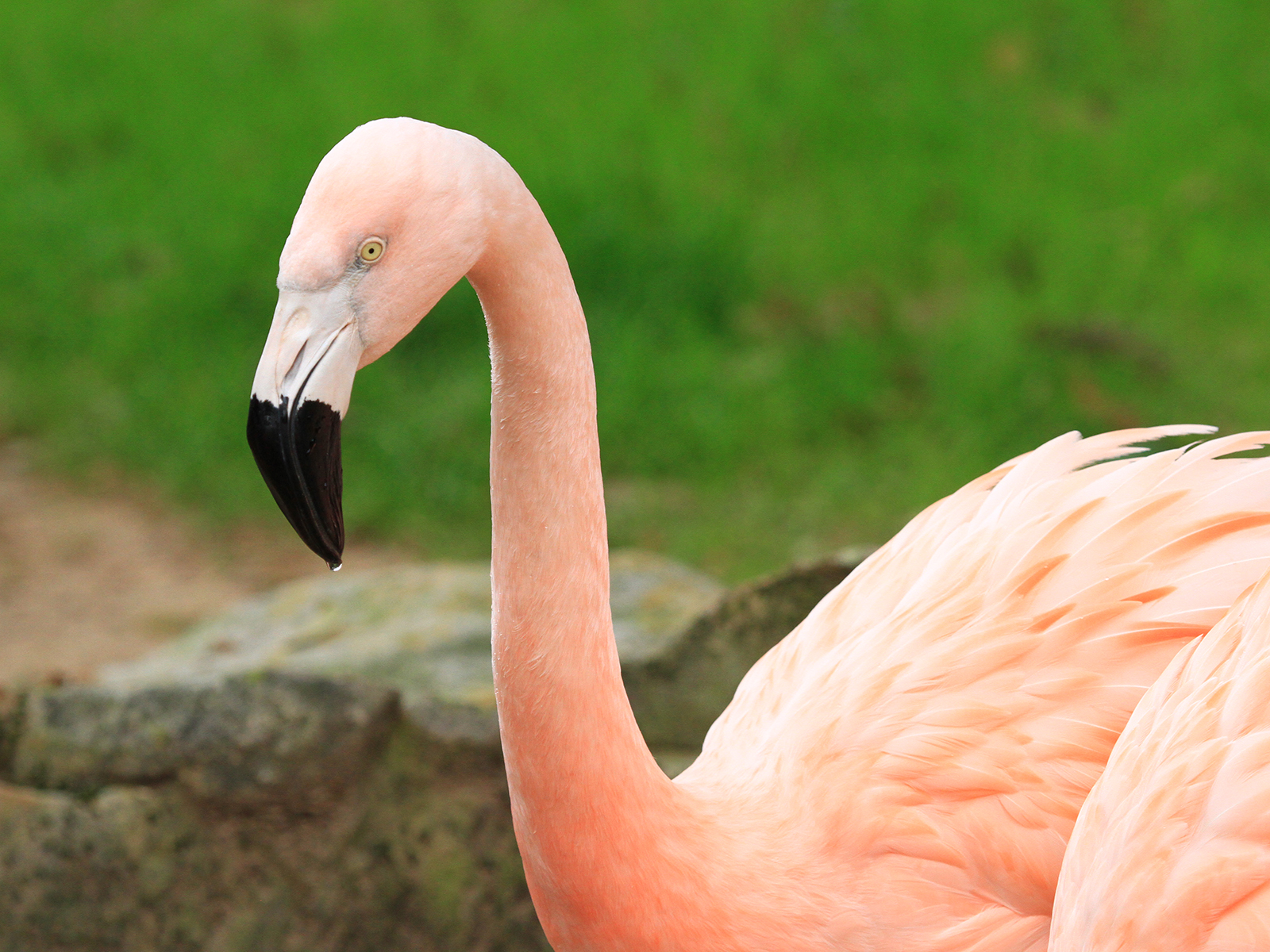Chilean Flamingo
Phoenicopterus chilensis
Class
Aves
Order
Phoenicopteriformes
Family
Phoenicopteridae
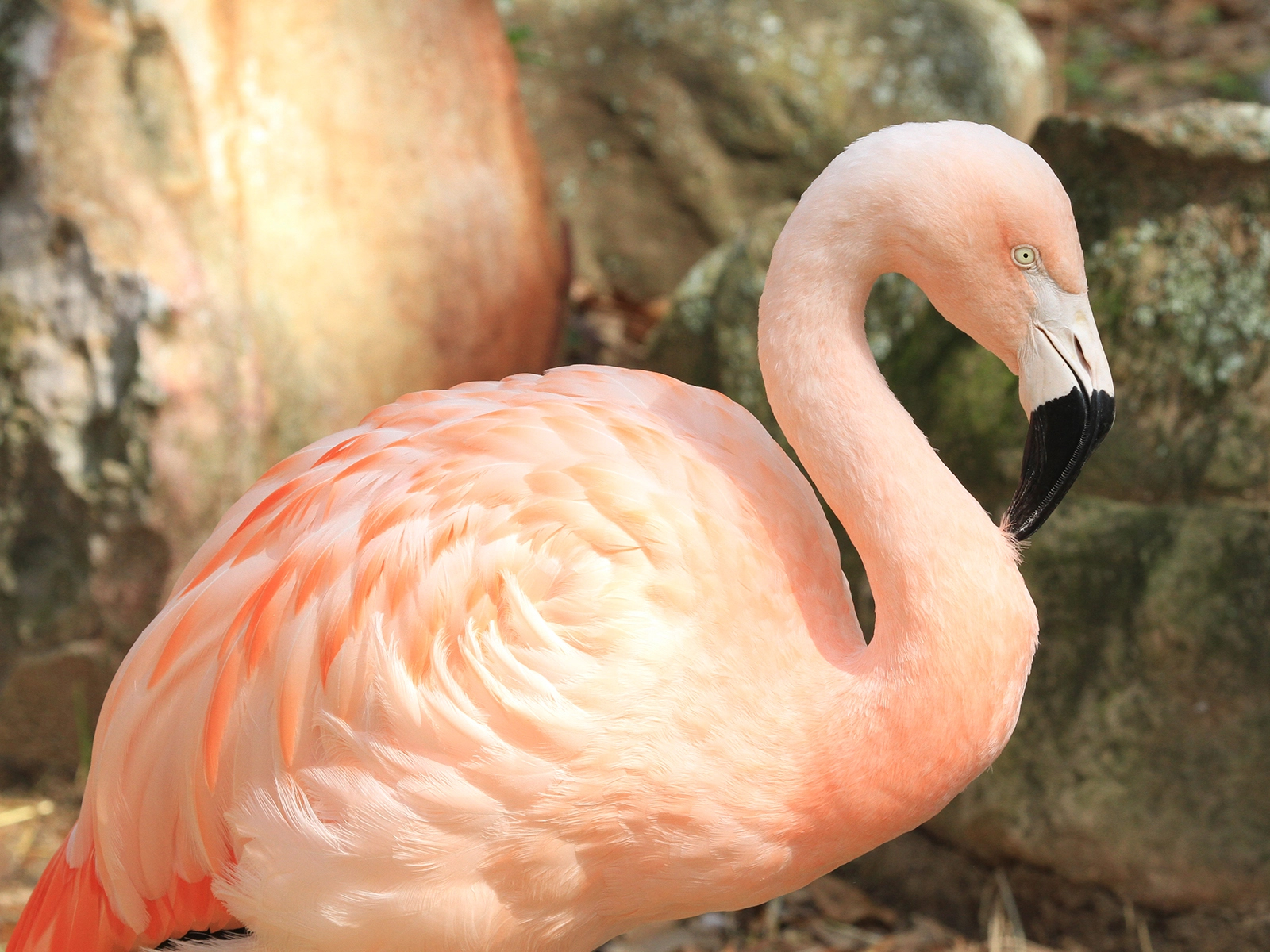
Aves
Phoenicopteriformes
Phoenicopteridae
South America; from Chile to Argentina
Length: 31 - 57 in
Wingspan: 55 - 65 in
Weight: 4.2 - 6.6 lbs
Tropical and warm climates; inhabit coastal mudflats, estuaries, lagoons, and salt-lakes. Live at elevations of up to 15,000 feet above sea level
Clutch usually 1 egg
Incubation: 26 - 31 days
Includes algae, diatoms, aquatic invertebrates such as crustaceans and mollusks
Near Threatened
Chicks have gray plumage; they don't gain adult coloration for two to three years.
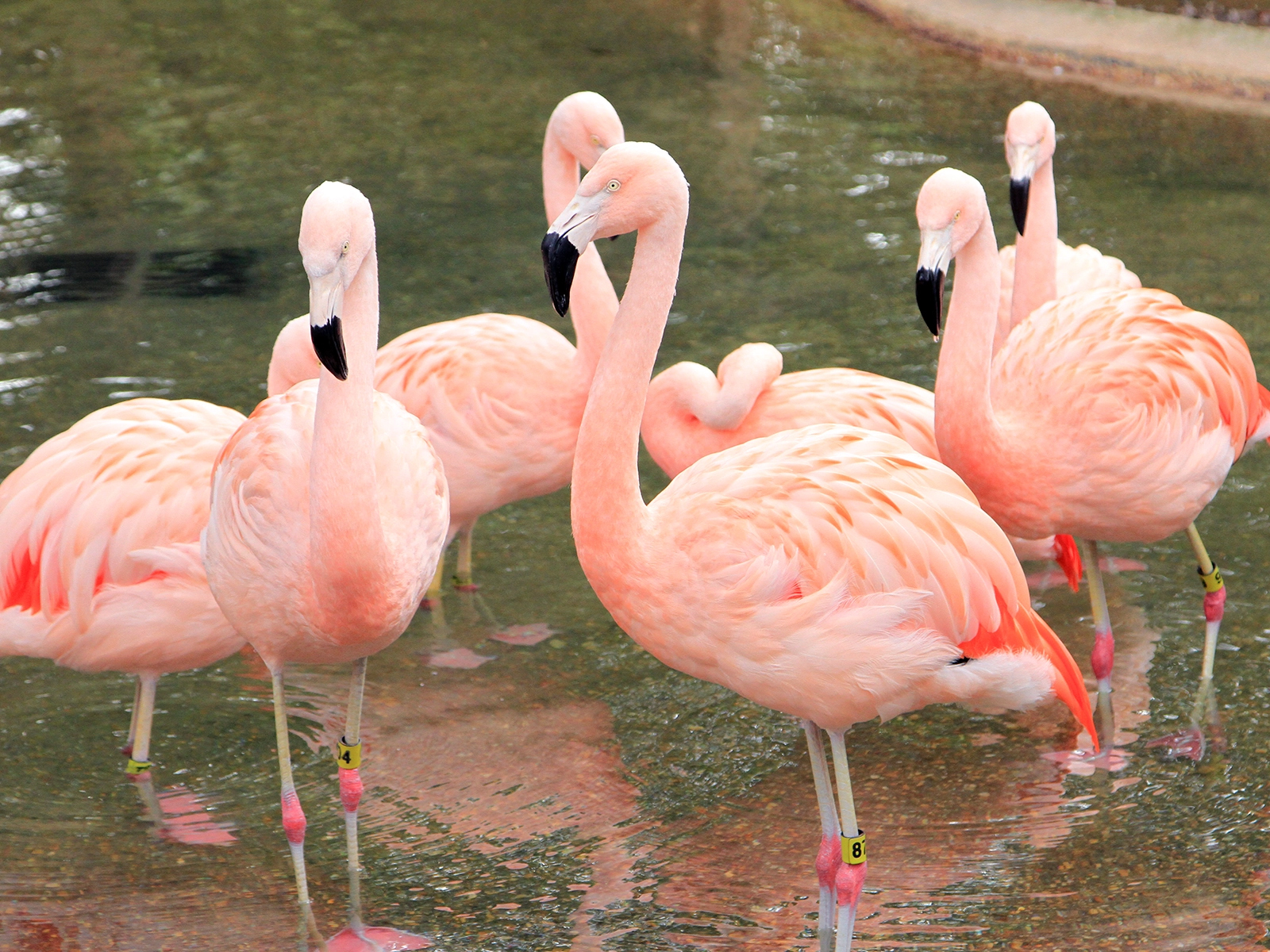
What appears to be the bird's knee is actually its ankle—the joint bends backward rather than forward. A flamingo neck has 19 vertebrae, while humans have only seven.
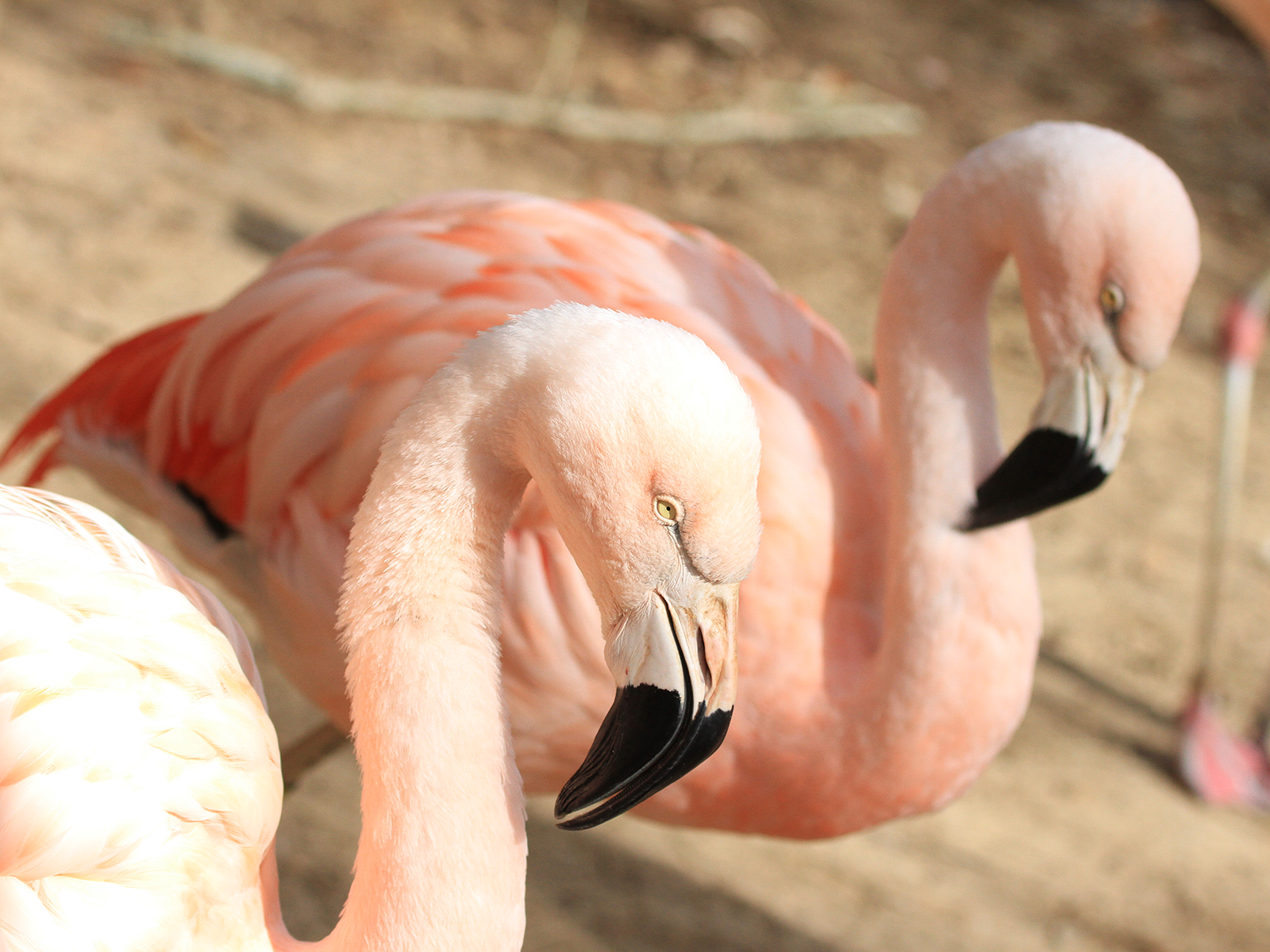
These very social birds live in flocks that can number in the thousands. The large group is their main defense against predators.
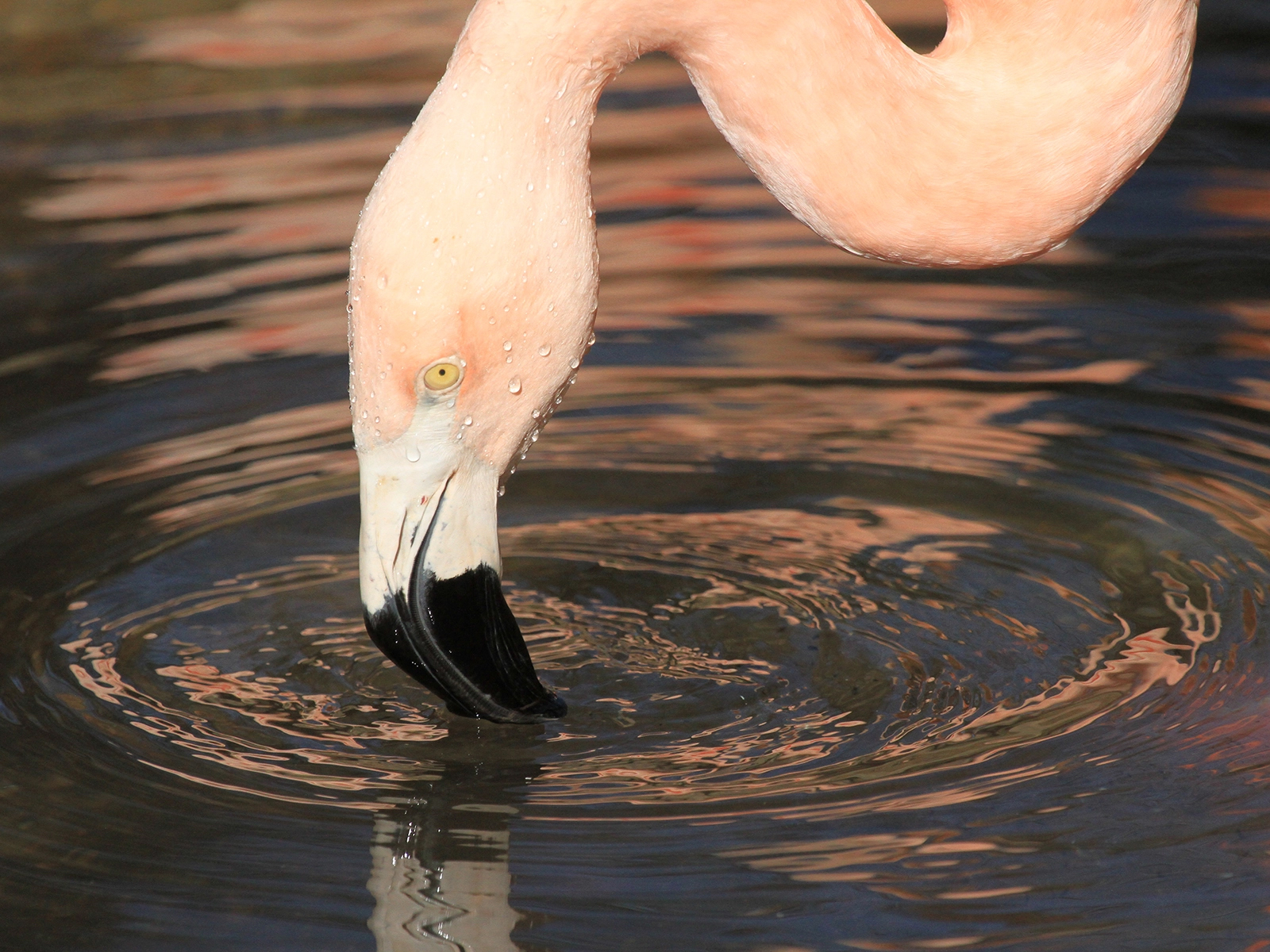
Flamingo fossil records date back to about 10 million years ago to the Miocene period. They are one of the oldest bird groups alive.
There has been a reduction in the number of Chilean flamingos due to habitat loss and degradation, harvesting, and human disturbance.
Humans are the main threat to Chilean flamingos due to either direct misuse or elimination of habitats or from indirect damage such as changing land characteristics, like changes in water level.
Chilean Flamingos are highly dependent on remote, saline wetlands and lagoons in the Andes, which are threatened by human activities.
Mind Resource Use. Support efforts to manage and protect water resources in South America. Flamingo habitats are often negatively impacted by the mining industry's water use and the extraction of lithium, which is abundant in the salt flats where they feed.
Sustainable Sourcing. Be a conscious consumer and research the sources of metals and materials used in products, supporting companies that have environmentally responsible and sustainable sourcing practices, particularly in the Andean regions.
Donate to FOTAZ. Friends of the Alexandria Zoo contributes funds each year to Zoo Conservation Outreach Group (ZCOG), a non-profit coalition of zoos, aquariums, and related partners committed to promoting wildlife and habitat conservation throughout the Americas.
